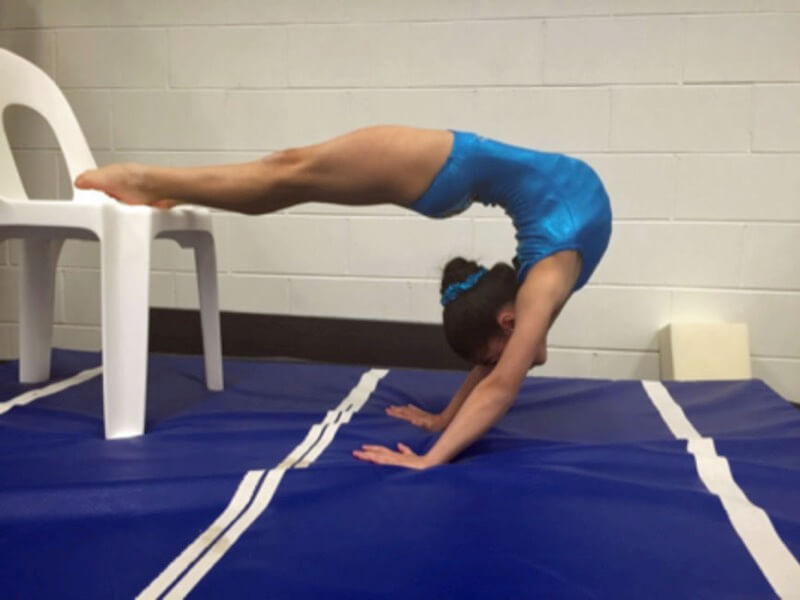A gymnastics bridge typically refers to a static position where the athlete moves the spine, shoulders and hip in hyperextension, whilst weight supported on the hands and feet (See Fig 1.).

Fig. 1 Back-bend position emphasizing hyperextension in the thoracic spine and shoulder hyper-flexion.
There are different styles of back-bends in performance, based on the placement of the majority of the spine in hyperextension.
Not only is it stereotypically used in women’s gymnastics for skill development but it is often seen in yoga and Pilates for therapeutic purposes and enhancement of health.
A common question that is asked is “What is required to perform a good gymnastic bridge?”
It is crucial to have adequate shoulder and thoracic mobility through extension. It can be quite difficult for most, especially if you have tight shoulders, however having shoulder and thoracic flexibility will prevent potential load onto the lumbar spine which may cause discomfort and pain.
During a gymnastics bridge, the lower back is primarily used for stability and should not be the primary source of extension for bridging skills.
In order to perform a good gymnastics bridge, here are some steps to assist in achieving the ideal model:
Use the foam roller on your thoracic spine for soft tissue release. This will promote thoracic spine extension and assist with increasing the ability to reach overhead for a bridge.
Bridge over swiss ball or cylinder to create a supported environment
Static/mobility exercises such as cobra, downward dog and elevated “cat” stretch will also assist in stretching the latissimus dorsi in preparation for a full bridge.
Elevate feet to promote shoulder flexibility and function (See Fig 2.)
Prone I/Y/T lifts whilst laying in face down with arms over the edge of a box and lifting arms up in either an I/Y/T with thumbs facing up to assist with to assist with mid back strength including the Middle and Lower Trapezius as well as Rhomboids to stabilise back during a bridge.

Fig. 2 Exaggerated position emphasizing shoulder and upper torso stretch. Minimize the excessive hyperextension of the low back by elevating the feet to above shoulder height and put the emphasis of the stretch on the shoulders.
Moving to and from the back-bend position requires a dynamic spine hyperextension. These movements should begin with shoulder hyper-flexion (the arms moving behind the head) and superior spine hyperextension.
When the gymnast begins to lower into the back-bend from standing position, the hyperextension begins at the shoulder and thoracic region and progresses incrementally from the most superior to the most inferior vertebrae.
When lowering to a back-bend from a handstand, the gymnast again begins the movement in the shoulders and superior spine.
Ideal bridge
Finally performing the ideal bridge position should begin with shoulder hyper-flexion by placing arms behind the ears (See Fig 1.).
Ideal bridge model should demonstrate an equal distribution of the mobility demand through the shoulders, lower back, and hips during a bridge. This reduces the load to one structure and helps to distribute the forces created and avoids the lumbar fold into extension thus reducing the risk of lower back pain.
Conclusion
The ‘hinge’ point may be involuntarily placed in the lumbar spine due to lack of flexibility of the thoracic spine and hip flexors. Unfortunately, it is too often seen in young gymnasts and adults that the lack of shoulder mobility that results in poor positions remains uncorrected and stiffness in these areas often goes ignored until pain occurs.
Additional stretches prior to commencing a bridge will assist to enhance shoulder, thoracic and hip function, and improve spinal extension which will assist in the prevention of lower back pain.
